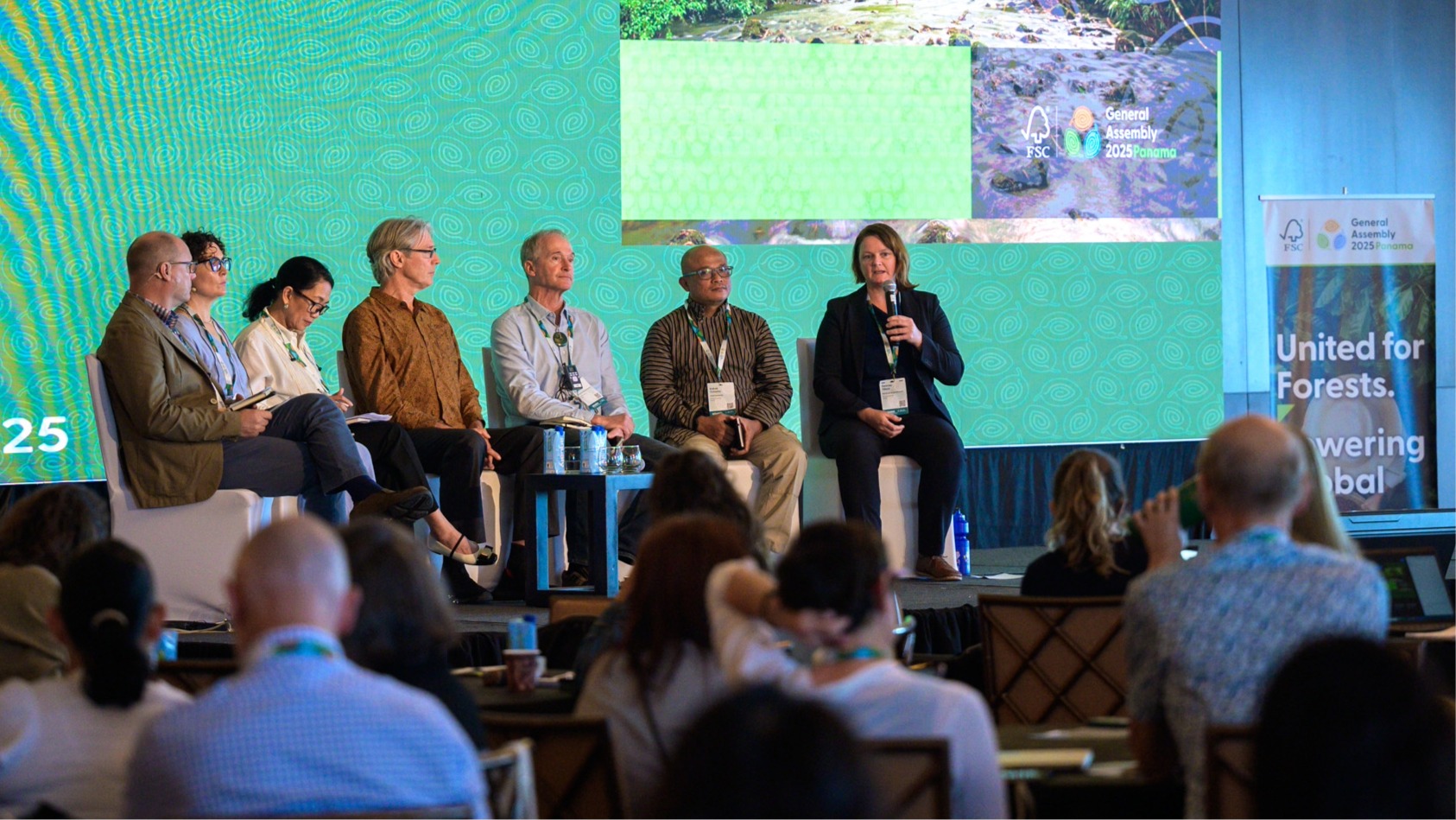
We cannot change the past, but we can work to remedy the social and environmental harms caused in the world’s forests and begin a path toward healing. The question is: how do we do this? And which stakeholders need to be involved?
FSC is undertaking the innovative task of managing a voluntary, non-judicial pathway that enables rights holders to access to remedy for environmental and social harms resulting from conversion of natural forests and other unacceptable activities. This is the Remedy Framework. An FSC General Assembly 2025 session brought together diverse voices to discuss learnings and next steps for the Framework’s implementation.
The session opened with a video featuring community members in Indonesia shared the violence, criminalization, and intimidation they faced from companies as well as their experience with the Remedy Framework, highlighting the gravity of this situation and how complex the remedy process can be.
Insights from implementation
Salem Jones, Director of System Integrity at FSC International, emphasized that remedy is a collective responsibility. She shared FSC’s progress to deliver elements of this framework through continuous learning – including the development of Free, Prior, and Informed Consent (FPIC) indicators to support verification, Standard Operating Procedures on determining the scope of control in Corporate Groups, a draft methodology for identifying loss and damage to High Conservation Values, and a conflict of interest management process.
“We knew this was going to be really difficult work and we knew this was going to be very controversial work, but our membership also recognized the opportunity to make really important impacts on the ground,” Salem said.
Lucita Jasmin, Group Sustainability Director at RGE – the first company to engage in the Remedy process – shared the company’s experience implementing the framework. She emphasized the importance of pragmatism and adapting to local needs and conditions.
“We found it courageous of FSC and its members to actually come up with a framework that is founded on the spirit of healing. It is an opportunity to restore not just forests but also social relationships,” Lucita said.
Patrick Anderson, Policy Advisor at the Forest Peoples Programme, presented a critical perspective on implementation. He highlighted concerns of lack of information at the community level and reports of violence and intimidation. He urged FSC to develop pilot projects to help communities better understand and participate in the framework.
Grant Rosoman, Senior Forest Solutions Advisor for Greenpeace International, focused on determining the scope of corporate groups with offshore holdings and opaque structures. He outlined technical challenges, including the need for specialized investigation skills, clear thresholds, and greater transparency around methodology and evidence to determine the extent of control exercised by corporate groups.
Kokok Yulianto, Commodity Markets Transformation Manager at WWF Indonesia, discussed the urgency of progress – noting that Indonesia has at least 800 thousand hectares of degraded forests that need to be restored. He highlighted the importance of balanced negotiation based on equity and a balance of power between rights holders and companies.
“Right now with Remedy, I think this is the last chance, or one of the options, to bring together environmental and social to have good hope for the future,” Kokok said.
Gemma Tillack, Forest Policy Director at the Rainforest Action Network, highlighted both the opportunities and risks associated with Motion 28, noting its significant potential for positive outcomes for nature and communities. She clarified that Motion 28 applies to corporate groups who have been disassociated with FSC.
The future of remedy
An engaging discussion took questions from the audience to explore the scope of Motion 28, its application to disassociated companies, and the role of governments in remedy. The recent Remedy Forum in Jakarta, Indonesia was highlighted as an example of the importance of government engagement and stakeholder collaboration in opening opportunities for remedy at the local level.
Salem Jones clarified that whether or not Motion 28 is approved, FSC will continue implementing its planned work, including developing verification tools and a digital monitoring platform to demonstrate impacts and outcomes from FSC remedy across landscapes.
The session concluded with agreement that remedy remains complex but essential. Participants underscored the importance of transparency, collaboration, and continuous learning to ensure meaningful outcomes for affected rights holders, communities, and landscapes.

